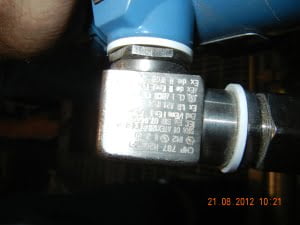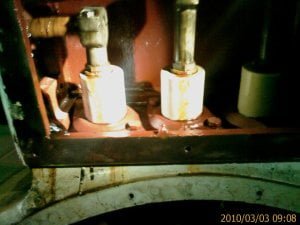Mechanics Of A New World
Date
September 12, 2013
Category:
DomesticAbout
Housekeeping
In many plants designed for the handling and processing of flammable materials, dust may escape from equipment and settle on the floor and on fixtures and fittings in the workroom. In the settled state the dust is not explosive but any unusual shock may displace some of it and disperse it in the form of a dust cloud. This shock is often caused by a relatively mild primary explosion inside the plant, the flame from which serves as a means of ignition for the dust cloud formed in the workroom. This secondary explosion disperses more of the dust accumulated in the workroom and ignites these clouds until the whole building is swept by the explosions. Accumulation of dust in workrooms is the cause of major explosions and its elimination is vital.
The following precautions should be observed:
(1)The dust must be prevented from escaping from the plant, which should be designed and constructed with this end in view. All joints should be flanged and packed. All inspection doors, slide valves etc., should be dust tight.
(2)Where practicable, the plant should be operated under a slight negative pressure to reduce the egress of dust.
(3)At charging and bagging-off points complete enclosure of the plant is not always practicable. To prevent dust from entering the workroom these points should be enclosed as far as possible by means of a hood or cabinet. The access openings should be reduced to a minimum. Local exhaust ventilation should be provided to control the dust cloud within the cabinet.
(4)The handling of sacks containing dusty material is a common cause of dust in workrooms. Sack storage should be avoided in rooms in which milling and similar processes are carried out. Such storage should be in a separate warehouse from which all plant in which a primary explosion could occur is excluded.
(5)In spite of all precautions some dust will always escape from the plant. It must be prevented from accumulating in workrooms by the regular and frequent cleaning of all parts of the room and plant on which it may settle. Careful design and construction of workrooms facilitates this cleaning. All horizontal surfaces on which dust can collect should be avoided. Window sills, door frames and projecting fittings should be made flush with the wall. Other horizontal surfaces like girders, beams and ledges should be bevelled to prevent settlement. Walls should be made smooth and corners should be rounded. Vacuum cleaning is recommended for dust removal. In small factories portable vacuum cleaners may be used provided the electrical equipment is safe for use when exposed to flammable dusts. A static vacuum pump fitted to a ring main is more suitable for large factories; the ring main should be provided at intervals with facilities for the connection of flexible cleaning hoses. Soft brooms may be used provided care is taken to avoid the generation of dust clouds.
The use of compressed air for cleaning is not recommended






